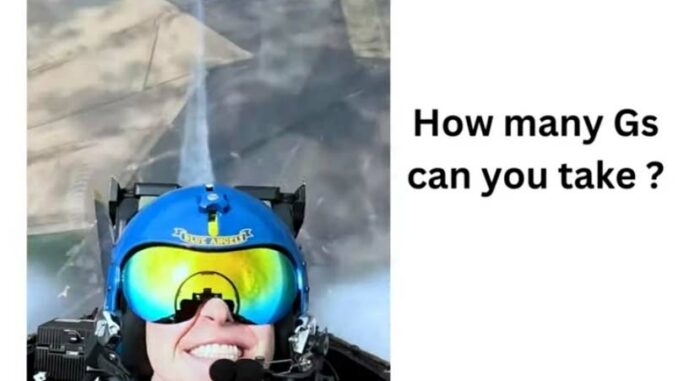
Check out this video – how many Gs can you take ?
G-Force: Its Effects and Importance for Fighter Pilots
G-force, also known as gravitational force, is a measure of acceleration felt as weight. When we talk about forces of gravity, 1G is what we experience daily while standing on the Earth’s surface. But when a person, like a fighter pilot, experiences accelerations in various directions, they can encounter multiple Gs. Understanding, anticipating, and responding to these forces is crucial for fighter pilots. Let’s delve deeper into what G-force is, why it matters, and how fighter pilots cope with it.
What is G-Force?
When an object accelerates, it generates a force. This force, in relation to the Earth’s gravitational pull, is termed as G-force. While gravity is a type of force that acts on all objects, the term ‘G-force’ commonly refers to the additional force (or perceived weight) acting on an object due to acceleration.
For example, during a sharp turn or rapid ascent, a pilot might experience forces several times greater than the force of gravity at Earth’s surface. If they experience a force three times that of Earth’s gravity, it’s called experiencing 3Gs.
Why Fighter Pilots Need to Be Aware of G-Force
- Physiological Effects: High G-forces can have pronounced effects on the human body. When a pilot undergoes positive Gs (from head to foot, like in a rapid ascent), blood is pushed down towards the legs. This can result in “G-LOC” or G-induced loss of consciousness because the brain becomes deprived of oxygen-rich blood. Conversely, negative Gs (from foot to head) can cause blood to rush to the head, which can lead to a redout—a condition where vision becomes filled with a red hue due to excessive blood in the eyes.
- Equipment Operation: Excessive G-forces can impact the operation of equipment within the aircraft. Instruments and systems may malfunction or give skewed readings under high G conditions.
- Aircraft Structural Integrity: Fighter jets are built to withstand multiple Gs, but there are limits. Exceeding the aircraft’s structural limits can result in catastrophic failures.
- Tactical Decisions: In combat scenarios, evasive maneuvers often involve quick, high G-force movements. Understanding G-limits and anticipating G-forces allows pilots to make effective tactical decisions without compromising their health or the aircraft’s integrity.
How Fighter Pilots Cope with G-Force
- G-Suits: A G-suit is a special piece of equipment that fighter pilots wear. These suits have inflatable bladders. When a pilot experiences high G-forces, these bladders inflate, pressing against the legs and abdomen. This helps push the blood back towards the upper body and the brain, reducing the risk of G-LOC.
- Anti-G Straining Maneuvers (AGSM): This is a technique taught to pilots to counteract G-forces. It involves tensing specific muscle groups in the legs, abdomen, and chest to restrict blood flow away from the brain. Along with this, pilots take short, forceful breaths to maintain oxygen levels.
- Physical Fitness: A fit cardiovascular system is essential for coping with G-forces. Regular exercise, especially aerobic training, helps improve the heart’s ability to pump blood against the forces trying to push it away from the brain.
- Training: Just as athletes train to improve performance, pilots undergo rigorous training to handle increased G-forces. Centrifuge training is common, where pilots are placed in a machine that simulates the G-forces of flight, helping them acclimatize to the conditions they’ll face in the air.
- Situational Awareness: By understanding their aircraft’s capabilities and limits, as well as their personal G-tolerance, pilots can anticipate and effectively manage the G-forces they’ll experience during flight.
G-force is a pivotal consideration for fighter pilots. It’s not just about the physical challenge; understanding and effectively responding to G-forces can be the difference between mission success and failure. Through a combination of equipment, training, and physical fitness, modern pilots are better equipped than ever to handle the rigors of high-speed, high-G flight.